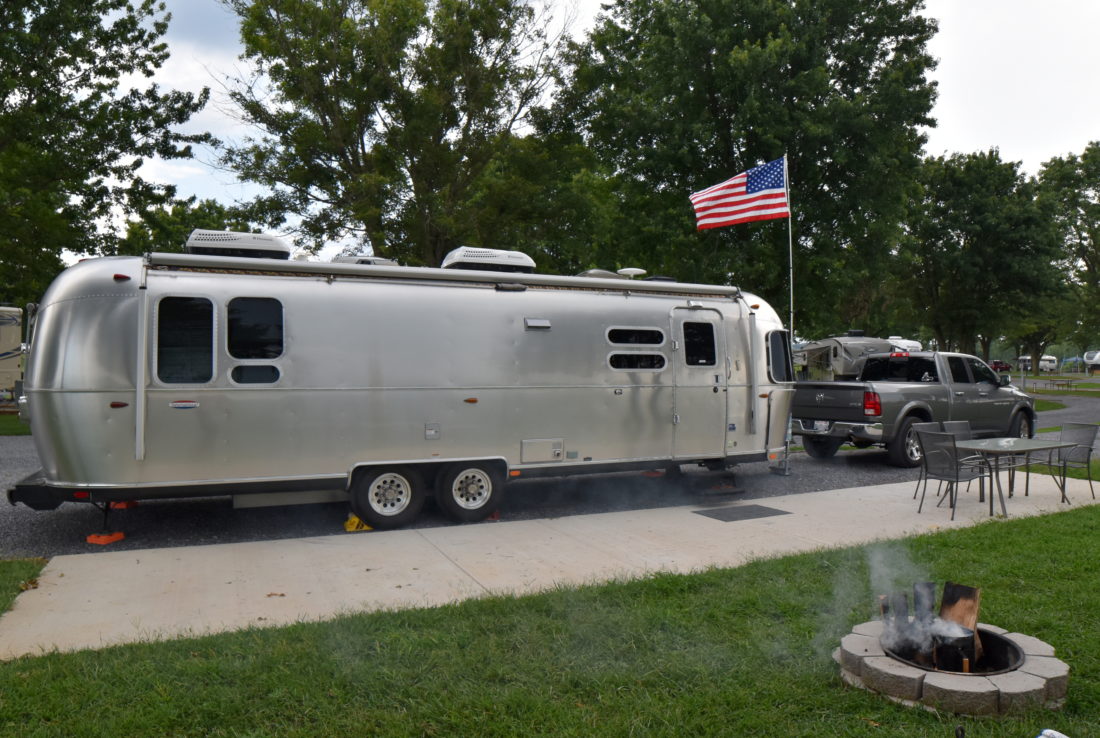This is our follow-up to 60-Day Airstream Maintenance Article.
It’s been 30 days since you’ve completed your 60-maintenance tasks on your beloved Airstream Travel Trailer – a total of 90 days have passed, that or you’ve traveled over 5,000 miles in total since you’re last maintenance. According to the Airstream Manual, its time for the 90-day Airstream Maintenance.
Before performing any mantinace on your Airstream, please read your Airstream’s manual!
THIS IS IMPORTANT! DON’T SKIP IT!
1. Apply Dry Graphite Lubricant to Exterior Door Locks
Dust and debris can make exterior locks kind of gummy or hard to turn. Therefore, its best to lubricate the keyhole with dry graphite. Dry graphite lubricant is a fine dusty material that comes in a small tube.
NOTE: Graphite is so fine a little goes a long way. Be careful to NOT breathe in the graphite.
Shake the tube, then remove the cap. Insert the nozzle tip into the keyhole and gently squeeze the center of the tube to dispense. Be sure to wipe away any excess graphite afterward.
2. Grease the Main Door Striker Pocket
The door striker is the pocket on the frame where the deadbolt inserts into and secure hook latch onto to secure the door close. Dirt and dust can accumulate during travel so cleaning and lubricating the striker pocket is important. If there is too much build up the striker pocket could rust since most kinds are made of steel rather than aluminum. Plus, it would be embarrassing to accidentally get locked out if the lock were to jam.
With paraffin or grease (Lithium Grease, Moly Grease, etc), a little goes a long way. Just lightly coat or spray the striker pocket with a very small amount lube.
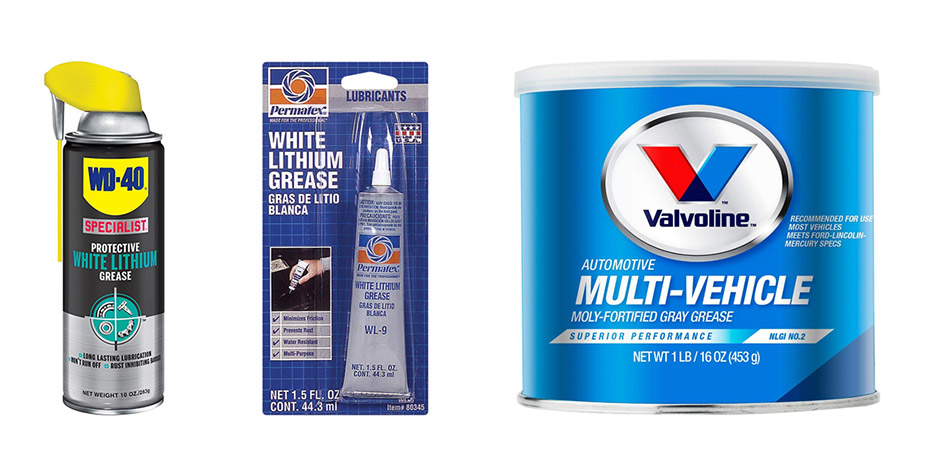
3. Lube Exterior Hinges
After a long drive or even after sitting in long storage, Airstream windows can get tetchy when you want to open them. The most likely culprit is the glass sticking to the rubber gasket, but sometimes the hinges will squeak or become a bit tacky. The same goes for the main door and any of the storage compartment doors.
This means the hinge has gotten dirty and needs cleaning. After cleaning just spray or squeeze a light household oil or lubricant on to the hinge and then wipe away any excess oil.
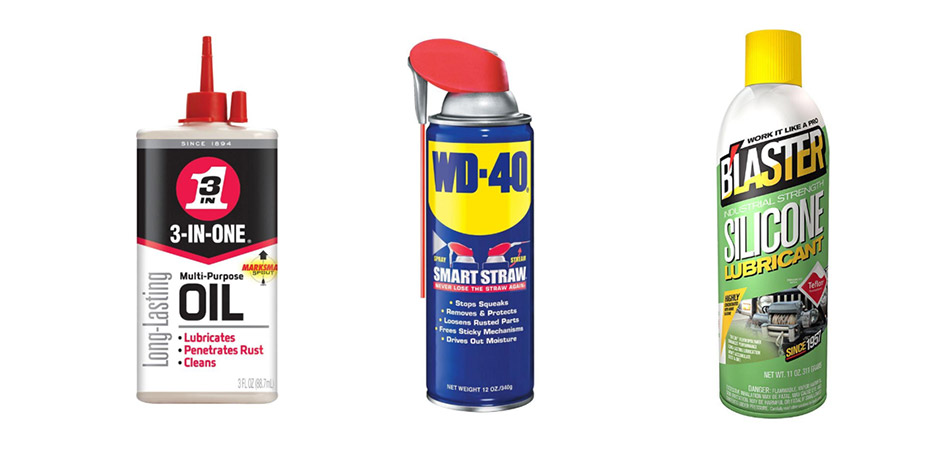
Our favorite is the 3-In-One Multi-Purpose Oil
4. Lube the Main Door Retractable Steps
The retractable Airstream steps get a lot of work out ferrying you and your family between the comforts of the interior and the excitement of the outdoors. It’s not fun to jump out should the steps get stuck just because they won’t extend. And even more frustrating when they won’t retract when you need to get on the road to your next destination. For maintenance, inspect and clean moving parts then lubricate with a light household oil.
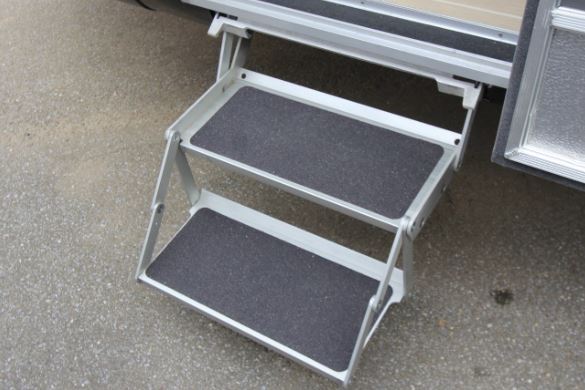
5. Lube the Propane Gas (or LPG) Tanks Hold-Down
Your Airstream’s LPG tanks are secured by an aluminum housing that is held securely in place by a large wing nut. Since it’s at the front of the Airstream, a lot of dirt, dust, insects, tar, and even tree sap can get in there. If you find that its hard to twist the wing nut, clean and lubricate with light household oil, then wipe away any excess oil.
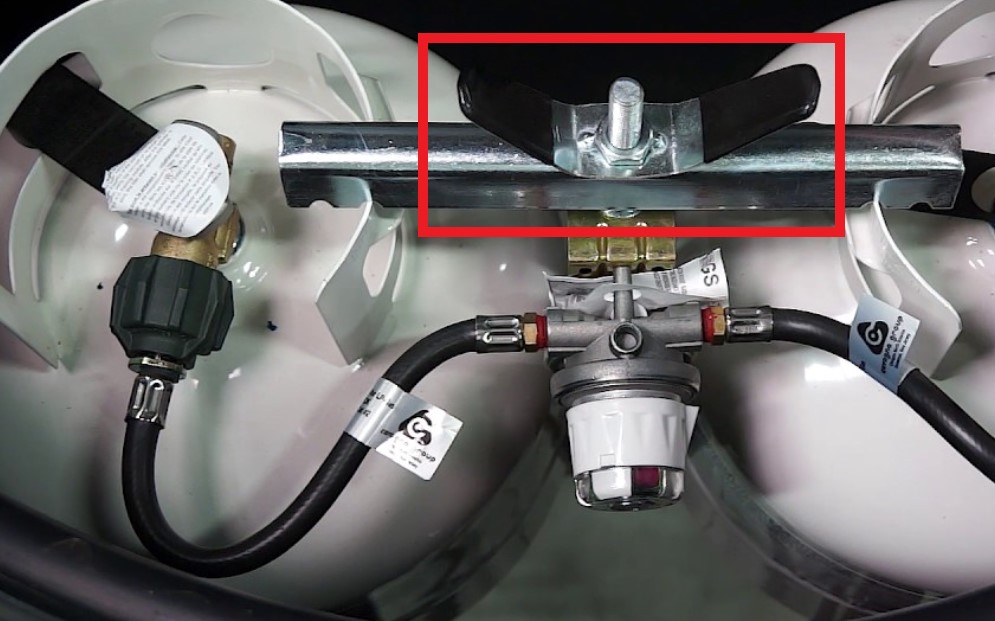
6. Check the Diaphragm Vent of the LPG Regulator
IMPORTANT!
Before performing any maintenance with the LPG tanks or tube feed system, turn off gas feed on both tanks by turning the valves to the closed position.
All modern Airstream models are equipped with a two-stage automatic change-over gas regulator that automatically changeover from the empty tank to the full gas cylinder while maintaining proper gas pressure in the system. Both tanks are connected to this regulator at the top by two separate black hose lines. The gas then feeds into the regulator at the top then out the bottom end into a single tube which leads into the Airstream. This circular part is called the diaphragm and it should be facing downward.
The on the diaphragm there is a vent that allows the regulator to “breathe” during normal operation and functions as a pressure relief opening in an overpressure situation. It should remain free of dirt and debris for the purpose of safety. If the regulator vent becomes blocked or the airflow is restricted for any reason, the regulator may operate incorrectly and present an unsafe situation for gas appliances downstream from the regulator.
For this reason, propane regulators must be pointed down, covered and protected, or have an adapter attached that places the vent opening in a downward-facing position. The vent opening must be protected so that insects, water, debris or other elements are unable to enter the regulator vent opening.
Check this vent for dirt and debris and clean well for a healthy propane gas system.
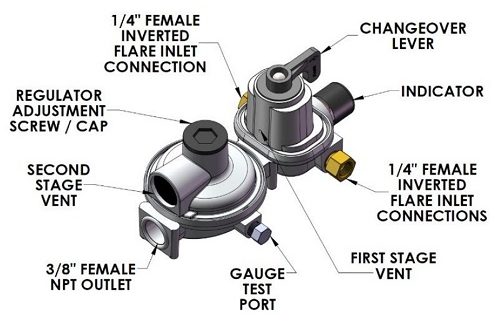
7. Lube the Breakaway Switch
In the event of accidental separation of the tow vehicle and the trailer, the breakaway switch will set and lock the trailer brakes for a sufficient length of time to stop the trailer. The switch is activated when the wire attached to it and to the tow vehicle pulls out the small pin in the front of the unit.
When the trailer is connected to the tow vehicle, the breakaway switch loop should be attached to the permanent frame of your hitch. When disconnecting the trailer from the tow vehicle, remove the wire loop from the frame. Do not manually remove the pin from the switch when towing because this will apply the trailer brakes.
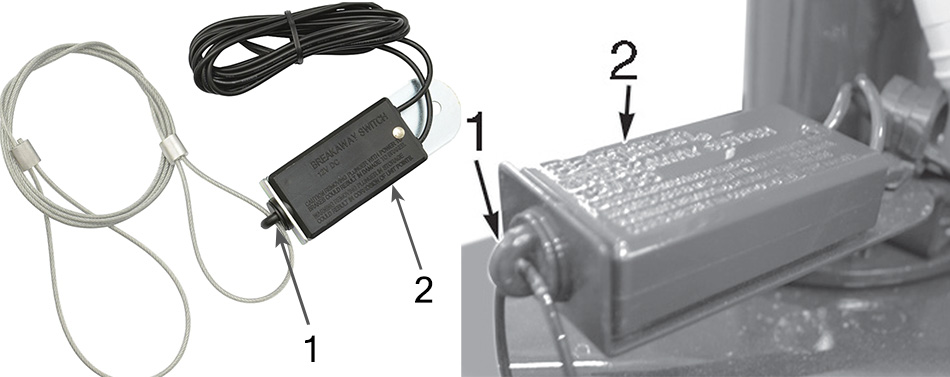
1. Pin 2. Breakaway Switch
IMPORTANT!
So sayth the Airstream Manual
Allow no more than 20 to 30 seconds of pin separation, as damage to brake magnets, may occur.
According to the Airstream Manual, do the following to prevent corrosion,
- Quickly pull the pin out and do a fast light spray or drop the inside of the switch through the hole with an electric contact cleaner.
- Apply a drop of light household oil on the pin and the groove near the base of the pin. Immediately reinsert the pin.
Performing this procedure every 90 days will allow the pin to operate freely should there be an accidental separation from the tow vehicle.

8. Inspect the 7-Way Plug
When being towed, the 12-volt batteries in your trailer are receiving a constant charge from the tow vehicle’s generator or alternator through the 7-way connector. Your tow vehicle’s voltage regulator controls the charge rate.
A sign that your 7-way connector needs cleaning is an intermittent warning from the brake controller on your dash indicating that a brake light or turn signal has gone out. Always check the 7-way plug first! This is where most problems occur because it’s exposed to the weather and corrosion tends to build upon the contacts. Brownish-black or green corrosion tells you that there’s a problem.
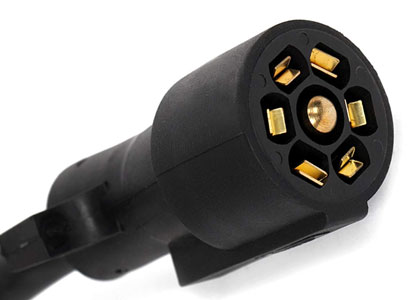
If the contacts show discoloration from its normal copper color, then using just a bit of electric contact cleaner. A tiny drop will go a long way, so very lightly spray or apply a tiny drop of contact cleaner to the leads.
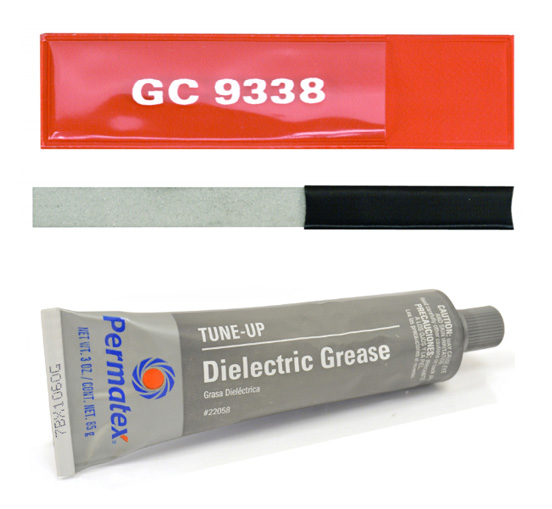
Bottom: Dielectric Grease
If there is a lot of debris build-up, use a burnishing tool to remove oxidization and corrosion from the metal connectors after applying contact cleaner. Then follow up with a dab of dielectric grease, this will lubricate the contacts and reduce electrical corrosion in the future.
If you are finding a lot of dirt and oxidization over a short period of time, it usually means your 7-way plug is being exposed to rough environments (high humidity, dusty and windy, etc). Consider using a 7-Way Trailer Plug Cover to protect the leads from the elements.
9. Lube Hitch Ball Latch
The hitch ball latch is located on the hitch ball receiver of your Airstream’s A-frame. It is what keeps your trailer attached securely on to the hitch ball of your towing vehicle. When the latch is up, the receiver is open, and the hitch ball can be decoupled. When the latch is down, the hitch ball is locked in.
Inspect the latch to see if it easily lifts up and closes down when the hitch ball is in place. If you find that the hitch latch is sticky when pulling up or you must bump it to fully close it down, then it’s a sign that you should inspect and lubricate.
Hitch Ball Latch is rather unusual when it comes to maintenance because Airstream manuals indicate that you should lubricate the latch with non-detergent motor oil. The manual we had didn’t specify the type of motor oil, but we used a simple off-the-shelf 30-weight non-detergent motor oil with an oil can and it worked just fine.
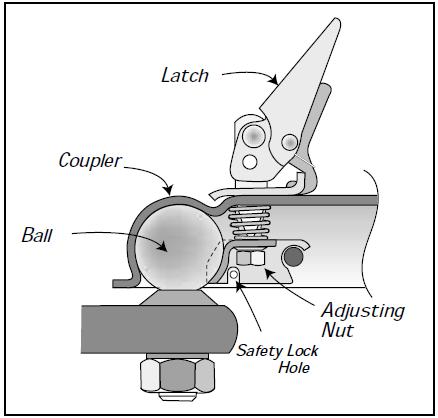
10. Grease the Hitch Ball
Airstream recommends that owners should lubricate with hitch ball lube, wheel bearing grease, or molybdenum grease every 90-days or as needed (especially when you’re towing and traveling around a lot). I would also suggest cleaning your hitch ball occasionally if there is a lot of dirt buildup since grease does tend to attract dirt. When you’re not towing your trailer, simply use a hitch ball cover to prevent dirt from collecting on the greased.
NOTE! Always check the manual for your specific hitch for any maintenance instructions.
In the case with our Blue Ox SwayPro Weight Distributing Hitch, the manual said to “periodically grease the hitch ball with molybdenum grease.”
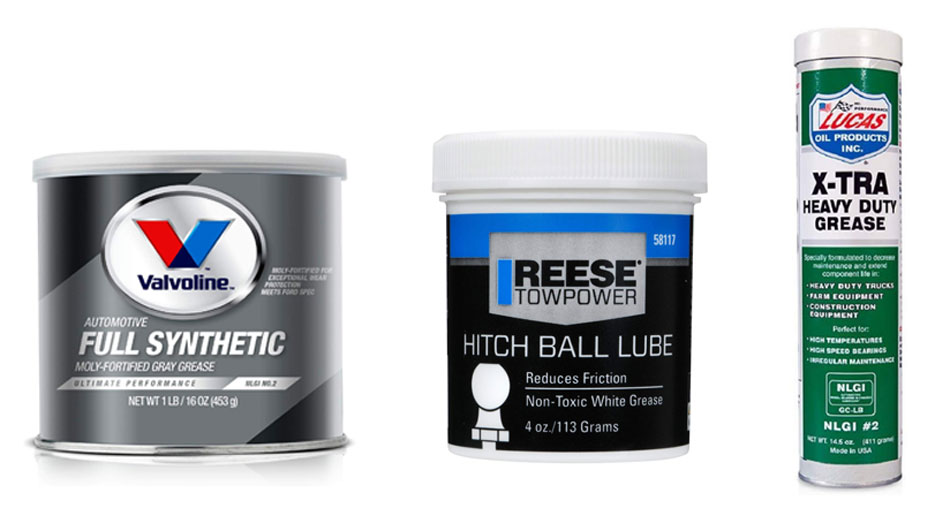
From Left to Right: molybdenum grease, hitch ball lube, wheel bearing grease
11. Clean the Range Exhaust Hood Fan and Filter
Depending on how much you use your cooking stove, its best to clean fan blades and wash the hood filter as apart of your 90-day task list.
For the filter, just clean with warm soapy water and a soft scrub brush or sponge.
If your filter is particularly stubbornly sticky with grease try the following:
- Prepare a boiling hot water bath in a bucket or sink. Pour a good squirt of de-greasing dish soap and 1/4 cup baking soda into the hot water.
- IMPORTANT! Use a cleaning brush to stir the hot water, baking soda, and soap mixture — not your hand! That’s hot boiling water in the bucket!
- After the water is nice and soapy, carefully place the greasy filter into the hot soapy water and let soak for about 10 minutes.
- Following the soaking, the water should have cooled down to a safe temperature and now you can scrub the filter with the cleaning brush until all the grease is gone.
- Rinse with water and dry using a clean cloth. Replace the filter back in the hood.
To clean the hood fan is a bit tricky, but very do-able. All you need is a Phillips head screwdriver to remove the fan assembly from its housing.
If it’s very greasy and sticky then its time to clean. Use a pair of plyers to screw the nut off from the fan which is holding in place against the motor. Take the fan and wash it in soapy water, whipping any grease, then dry with a clean cloth before replacing. If the fan is extra greasy, just apply the same method as suggested with the filter.
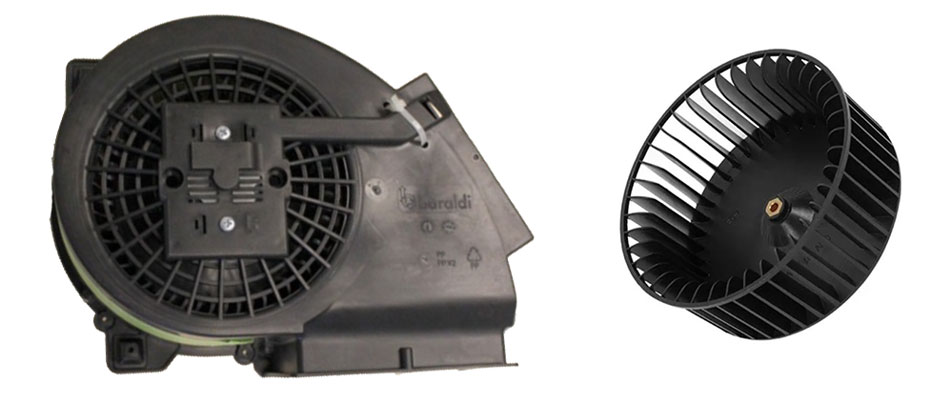
Right: An example of the fan blades outside of the fan motor.
NOTE! Just be careful to not lose any screws, nuts or parts from your fan disassembly and to put it all back the way you found it once you finished washing the fan.
12. Check the Torque Rating of Wheel Lug Nuts
According to the official Airstream Manual, the trailer wheels must carry much heavier loads per wheel than passenger cars or truck wheels. Each wheel may carry 1,000 pounds or more. Furthermore, wheels on tandem axle trailers do not steer. This means the axles and tires are subjected to very high side load stress whenever the trailer makes a tight turn. When going around corners, especially on slow, tight turns, the wheels are subject to very strong side loads. This tends to flex the wheel and gradually loosen the wheel lug nuts. Although the materials and manufacturing methods are maximized for this kind of service, these extra loads can cause stress, which can result in flexing and loosening of wheel nuts
If you notice wheel wobbling or hear a rattling sound coming from a wheel, especially at low speeds, a wheel lug nut may have come loose. This problem is usually caused by improper tightening, or by faulty or damaged lug bolt threads.
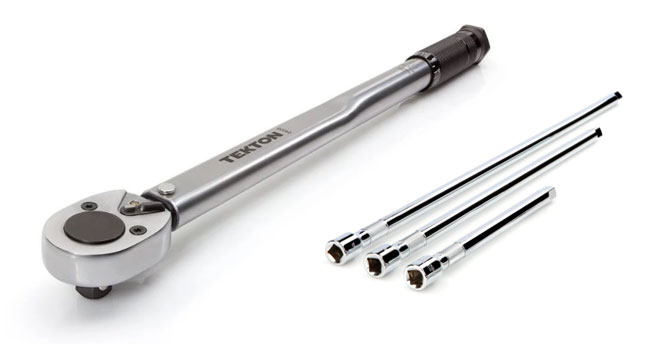
NOTE! Before beginning this maintaining your tires wheel lug nuts, read your Airstream’s manual and read the specification chart for wheel torque ratings under the “Floor Plans and Specifications” chapter. Under the “Maintenance” section look for torque tightening sequence should you find that your lug nuts are loose. There also should be an entry to see what size your lug nuts are.
IMPORTANT!
Use a torque wrench to tighten lug nuts!!
Tightening by hand or with an impact wrench is not recommended. See your Airstream’s Specification Chart in your manual for wheel torque ratings and tightening patterns.
Airstream Manual
Our Airstream dealership suggested we get a 1/2″ torque wrench that measures torque force from 10 ft-lbs to 150 ft-lbs, which covers all of the wheels normally found on many modern Airstream travel trailers. I also suggest using drive extensions so you can reach the lugs without scratching the wheel rims.
This can seem daunting for your first time, but the folks at Colonial Airstream do an excellent job of explaining how to perform this maintenance task with ease.
TrailAndHitch.com is a participant in the Amazon Services LLC Associates Program, an affiliate advertising program designed to provide a means for sites to earn advertising fees by advertising and linking to Amazon.com
